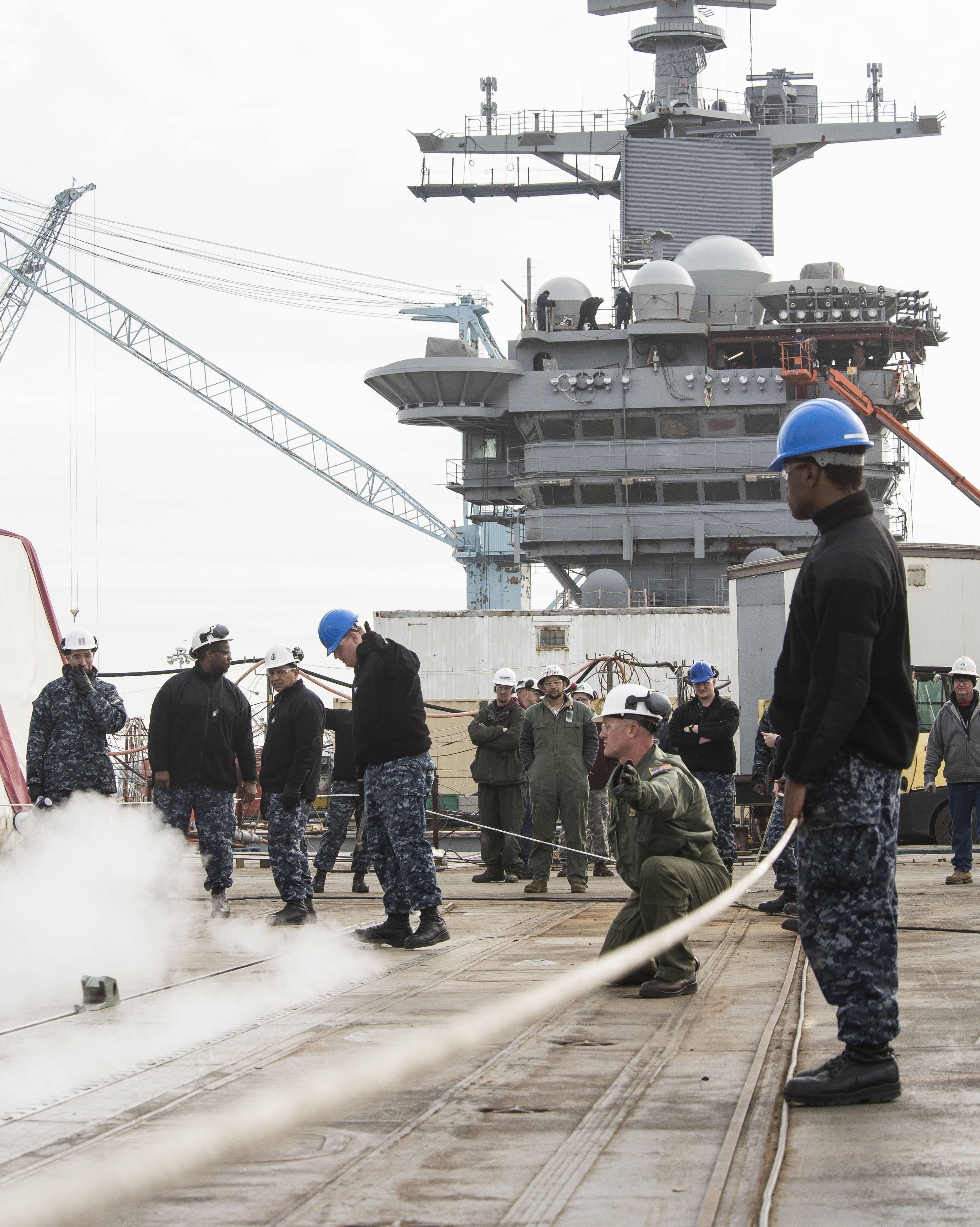
The BH5 catapults were originally designed and built to meet a last war staff requirement since then it has been found possible to increase their performance by the use of higher operating air and hydraulic pressures. Eagle and other postwar carriers have two more powerful hydro-pneumatic catapults of the BH5 mark, giving some 20-25 knots greater end speed than the BH3, and with heavier aircraft.

aircraft carriers built during and prior to the late war have a hydro-pneumatic catapult of the mark designated BH3 which has proved adequate for piston engined fighters and strike aircraft in service to date. These hydro-pneumatic catapults are heavy and complicated but have given satisfactory performance for a number of years. In addition to the ropes connecting the piston and shuttle to transmit the launching force, further ropes are required, fixed to the after end of the shuttle to bring it rapidly to rest at the end of acceleration, and then to retract it to the firing position. The compressed air is stored in large steel air bottles and after each launch is re-compressed into the bottles by the piston which is forced back by hydraulic pressure on its other side the pressure is supplied by large and powerful hydraulic pumps and is controlled by valves. The piston is connected by ropes running over pulley wheels to a bogie, or shuttle, running on wheels or slide blocks in a deck track the shuttle is connected to the aircraft by a bridle. Very briefly, these catapults use the force of compressed air acting on a piston to accelerate the aircraft. 1: Arrangement of a hydro-pneumatic catapult in an aircraft carrierĪll existing aircraft carriers in the Royal Navy and United States Navy have, up till now, used catapults of the hydro-pneumatic type. The accepted policy is that aircraft performance should be conserved by providing aids to take-off and landing as part of the ship wherever practicable and possible.
#STEAM CATAPULT FREE#
The situation outlined has arisen because of the penalties on aircraft performance and endurance which would unavoidably follow from building the requisite free take-off characteristics into conventional type aircraft. Of these the latter is favoured as being easier and more economical to use. At present the only known methods of achieving this are either jettisonable rockets attached to the aircraft or the use of the mechanical towing force of a catapult.

They require assisted take-off that is, the application of some force additional to the thrust of the aircraft engines to accelerate them rapidly to flying speed. Aircraft are now coming into service which cannot be expected to make a free take-off from a carrier deck under normal operational conditions. IntroductionĪs readers of this Journal will be aware, the catapult has, in recent years, become of ever greater importance in the operation of aircraft from carriers and, unless some radical change in the characteristics of aircraft becomes possible and is made, it appears that this importance will continue.


 0 kommentar(er)
0 kommentar(er)
